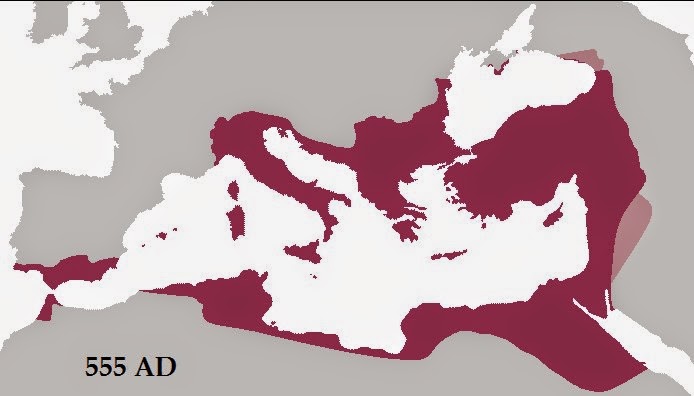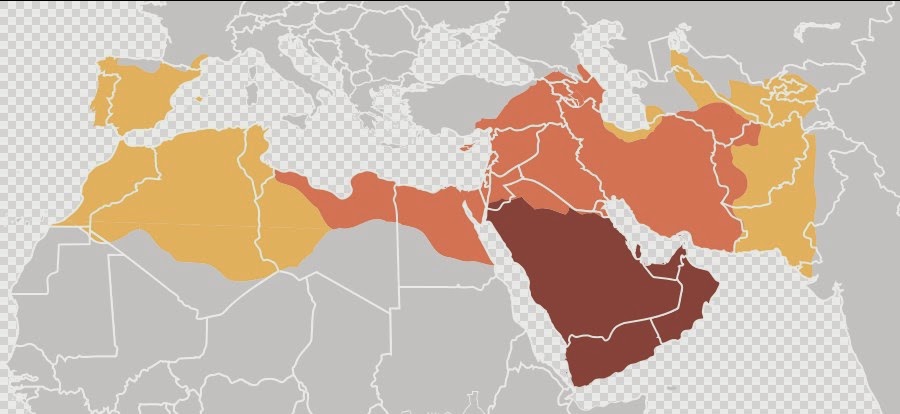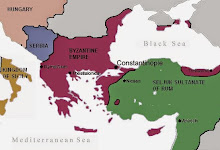Most people have a distorted view of the Crusades. History revisionists have led them to believe the Crusades were an unprovoked assault by Christian Europeans against peaceful Muslims. Nothing could be further from the truth.
From the time Islam was founded in the 7th century A.D. Muslim armies began invading the lands around them in the name of jihad. Beginning in the Arabian peninsula, they conquered eastward as far as India, northward throughout the Middle East into modern day Turkey, westward through northern Africa and into Spain, at which point they had become the largest empire on earth.
Many of the lands they overran were Christian territories at the time, including modern day Turkey, Syria, Lebanon, Israel, Egypt, all of northern Africa, and Spain. From the Christian perspective the Islamic Empire was executing a massive pincer movement, encircling the Mediterranean and preparing to take over all of Europe. In the west Roman Catholic Europeans fought against the invaders in Spain, while the Eastern Orthodox Christians of the Byzantine Empire battled relentlessly with Islamic forces in the east.
Many of the lands they overran were Christian territories at the time, including modern day Turkey, Syria, Lebanon, Israel, Egypt, all of northern Africa, and Spain. From the Christian perspective the Islamic Empire was executing a massive pincer movement, encircling the Mediterranean and preparing to take over all of Europe. In the west Roman Catholic Europeans fought against the invaders in Spain, while the Eastern Orthodox Christians of the Byzantine Empire battled relentlessly with Islamic forces in the east.
In 1071 the Byzantines lost a major battle to Islamic forces near Manzikert in Turkey, which was falling more and more into the hands of the Muslims. This eventually led Alexius I, Emperor of Byzantium, to send word to the Pope in western Europe seeking reconciliation between the Roman Catholic church and the Eastern Orthodox church. He also requested assistance from western European forces to repel the Islamic armies in the east. The capital of Byzantium, Constantinople, was situated at the crucial passage between Asia and Europe. European leaders realized that if Constantinople, the great bulwark to the east, was to fall, nothing could hinder a great flood of Islamic troops from penetrating into Europe. All of Christianity could be eradicated.
In 1095 Pope Urban II launched a rally cry to go and fight in the east to defend all of Christendom and to reclaim the lands that had been taken in the Middle East, including and especially the Holy Land of Israel.
Admittedly, the motives of many kings and nobles were for their own personal gain of glory, lands, and wealth. Most of those who fought were probably not even true Christians since it was the law throughout Europe that you must be Christian or face death. The Crusades, undoubtedly, were brutal and violent. Neverthel ess, the primary impetus for the Crusades was self-defense against a relentless onslaught of attacks against Christian lands and the preservation of Christendom itself. The other major motive was the reclamation of Christian territories that had been taken by force by Muslim invaders.
ess, the primary impetus for the Crusades was self-defense against a relentless onslaught of attacks against Christian lands and the preservation of Christendom itself. The other major motive was the reclamation of Christian territories that had been taken by force by Muslim invaders.
Therefore, the Crusades were not an unprovoked attack, but a reaction to hundreds of years of Islamic invasions, conquests, and attacks against Christian lands and people.
Sources: Encyclopedia Britannica
Byzantium by John Julius Norwich
In 1095 Pope Urban II launched a rally cry to go and fight in the east to defend all of Christendom and to reclaim the lands that had been taken in the Middle East, including and especially the Holy Land of Israel.
Admittedly, the motives of many kings and nobles were for their own personal gain of glory, lands, and wealth. Most of those who fought were probably not even true Christians since it was the law throughout Europe that you must be Christian or face death. The Crusades, undoubtedly, were brutal and violent. Neverthel
 ess, the primary impetus for the Crusades was self-defense against a relentless onslaught of attacks against Christian lands and the preservation of Christendom itself. The other major motive was the reclamation of Christian territories that had been taken by force by Muslim invaders.
ess, the primary impetus for the Crusades was self-defense against a relentless onslaught of attacks against Christian lands and the preservation of Christendom itself. The other major motive was the reclamation of Christian territories that had been taken by force by Muslim invaders.Therefore, the Crusades were not an unprovoked attack, but a reaction to hundreds of years of Islamic invasions, conquests, and attacks against Christian lands and people.
Sources: Encyclopedia Britannica
Byzantium by John Julius Norwich
History of Western Civilization (textbook)
(Update 11/1/2015)
Bill Warner, PhD: Jihad vs Crusades - I found this YouTube video that demonstrates this.






